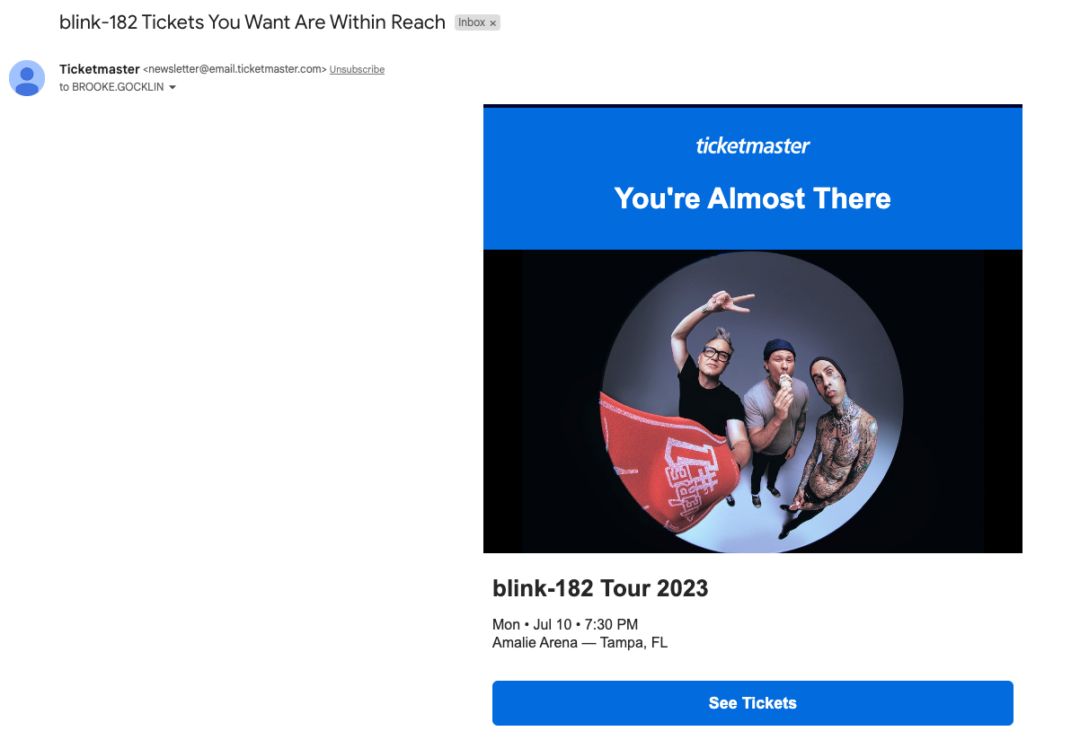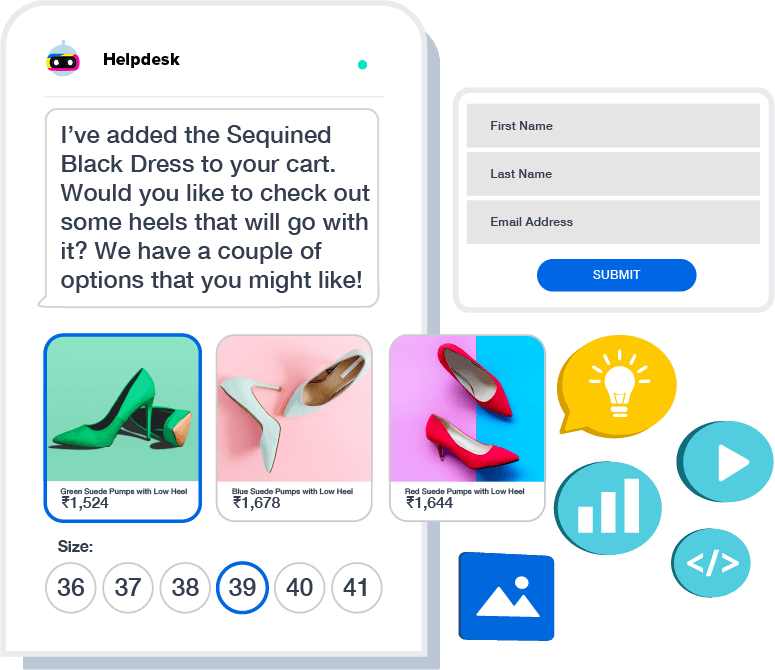Content Marketing
Why You Should Prioritize Engagement Content Metrics
As marketers, we’re always looking for ways to measure our effectiveness and attribute our work back to the pipeline. Content marketing is no exception. However, traditional metrics like website visits or clicks don’t tell us the whole story of how our content is performing.
Engagement content metrics are a powerful way to gain deeper insights into our content’s performance and determine whether or not it’s having the desired effect. These metrics measure how well users interact with content, such as how long they spend on an article, how many shares it receives, or which sections of a page are clicked.
By leveraging these types of metrics, you can gain invaluable insights into what resonates with your target audience and what doesn’t. Engagement content metrics can also help you determine the best times and formats for distributing your content, as well as which topics generate the most interest.
Metrics help us make data-driven decisions to improve our strategies. Without metrics, content marketing efforts can become directionless and ineffective, wasting time and resources. So how do you know which ones are most important for your goals?
Why Engagement Content Metrics Matter
The shift towards engagement as the best metric for measuring consumer sentiment and brand effectiveness can be attributed to several factors. Engagement content metrics such as likes, comments, and shares provide a more comprehensive view of how audiences are interacting with your brand and what you produce.
Engagement content metrics measure brand sentiment and affinity, identify what resonates, and begin an authentic relationship-building process.
Audiences are actively engaging with content rather than simply consuming it. So engagement is a clear indicator that audiences are interested and invested in the content and the brand behind it. By tracking engagement content metrics, content marketers can gain insights into how audiences are responding to their content and their brand, developing an understanding of brand sentiment.

Positive engagement metrics are an indicator of brand affinity, while negative engagement metrics can signal issues that need to be addressed. Engagement content metrics provide a more accurate reflection of the customer journey.
Content marketers can track engagement metrics at different stages of the customer journey to understand how audiences are interacting with content and how it is influencing their decision-making process. This helps them optimize their content strategies to improve engagement and ultimately drive conversions. By focusing on engagement rather than revenue, content marketers are prioritizing a positive customer experience, building brand loyalty, and improving overall business performance.
This authentic relationship is better than multi-touch attribution back to revenue because it showcases that customers are interacting with a brand at different stages of the buyer’s journey.
Overall, the shift towards engagement as the best metric for measuring consumer sentiment and brand interaction reflects the importance of building authentic relationships with audiences, understanding the customer journey, and prioritizing the customer experience.
Improve Engagement Through Customer Experience
So how do you improve engagement? Start with personalized customer experiences. When customers feel valued, appreciated, and understood, they are more likely to return to the business and recommend it to others. Here are some reasons why providing a positive customer experience is essential for improving engagement:
- Builds trust and loyalty: When a customer feels valued and appreciated, they are more likely to trust the business and become loyal to its brand.
- Increases customer retention: When customers are happy with their experience, they are more likely to return to the business and make additional purchases. This not only increases revenue but also helps to build a loyal customer base.
- Improves brand reputation: When customers have a positive experience, they are more likely to share their experience with others, leading to positive word-of-mouth marketing for the business.
- Encourages customer feedback: When customers feel valued and appreciated, they are more likely to provide feedback on their experience, which can be used to improve the business’s products, services, and overall customer experience.
Why Engagement Tells a Better Story Than Revenue
Personalized and relevant content can be a powerful tool for brands to improve engagement with their target audience. Here are some examples of how brands can use personalization to improve customer experience and enhance engagement metrics.

- Personalized email campaigns: Brands can use email marketing to send personalized messages to their subscribers based on their previous purchases, interests, or behaviors. For example, a clothing retailer can send an email with personalized product recommendations based on the customer’s previous purchases, or a beauty brand can send personalized tips and tutorials based on the customer’s skin type or beauty concerns.

- Personalized product recommendations: Brands can use data analytics to offer personalized product recommendations to their customers based on their browsing and purchase history. For example, an online bookstore can recommend books to customers based on their reading history or wishlist, or a streaming service can recommend movies or TV shows based on the customer’s viewing history.

- Personalized social media content: Brands can use social media to create personalized content for their followers. For example, a food brand can create recipes for their followers based on their dietary preferences or cooking skills, or a fitness brand can create personalized workout plans based on the customer’s fitness goals or activity level.

- Personalized landing pages: Brands can create personalized landing pages for their website visitors based on their search terms, referral source, or demographics. For example, an e-commerce brand can create landing pages with personalized product recommendations or promotions based on the customer’s search terms or referral source. In addition, account-based marketing strategies target specific companies or clients to create more personalized experiences for high-dollar target accounts.

- Personalized chatbots: Brands can use chatbots to offer personalized assistance to their customers based on their queries or preferences. For example, a travel brand can use a chatbot to offer personalized travel recommendations based on the customer’s budget, destination, or travel style, or a customer service chatbot can offer personalized solutions based on the customer’s issue or feedback.
Brands can use personalized and relevant content to improve engagement by offering customized experiences that cater to their customers’ preferences, interests, and behavior. By using data analytics and technology, brands can create personalized content that resonates with their target audience and builds long-term relationships with their customers.
Engagement Content Metrics vs. Revenue Attribution
Engagement metrics and revenue metrics are both important measures of a brand’s performance, but they serve different purposes and have different limitations. Let’s explore how engagement metrics compare to multi-touch attribution calculations. Which provides a more comprehensive view of the customer journey?
- Engagement metrics: Engagement metrics measure how users interact with a brand’s content or social media accounts. They include metrics such as likes, comments, shares, followers, and click-through rates (CTRs). These metrics help brands understand how users engage with their content and how effective their marketing strategies are in building brand awareness and engagement.
- Revenue metrics: Revenue metrics, on the other hand, measure how much revenue a brand generates from its marketing efforts. They include metrics such as return on ad spend (ROAS), customer lifetime value (CLV), and conversion rates. These metrics help brands understand the financial impact of their marketing strategies and how effective they are in driving sales and revenue.
- Limitations of revenue metrics: Revenue metrics have some limitations compared to engagement metrics. For example, they don’t capture the full picture of a customer’s journey or the impact of non-financial factors such as brand loyalty or customer satisfaction. They also don’t account for the indirect or long-term effects of marketing strategies, such as the impact of brand awareness or word-of-mouth marketing.
- Comprehensive view of the customer journey: Engagement metrics can provide a more comprehensive view of the customer journey by capturing the interactions that users have with a brand before and after they make a purchase. For example, engagement metrics such as likes or shares can indicate brand loyalty or advocacy, which can lead to repeat purchases or referrals. Engagement metrics can also help identify areas for improvement in the customer experience, such as identifying common pain points or areas where users drop off in the customer journey.
Engagement metrics and revenue metrics both have their strengths and limitations. While revenue metrics are important for measuring the financial impact of marketing efforts, engagement metrics can provide a more comprehensive view of the customer journey and help brands understand how users interact with their brand beyond just making a purchase.
By using a combination of engagement metrics and revenue metrics, brands can gain a more holistic understanding of their marketing performance and develop more effective content strategies.
Stay informed on the latest content trends and marketing strategies. Follow The Content Strategist newsletter for more content just like this!
Image by Denis NovikovGet better at your job right now.
Read our monthly newsletter to master content marketing. It’s made for marketers, creators, and everyone in between.




